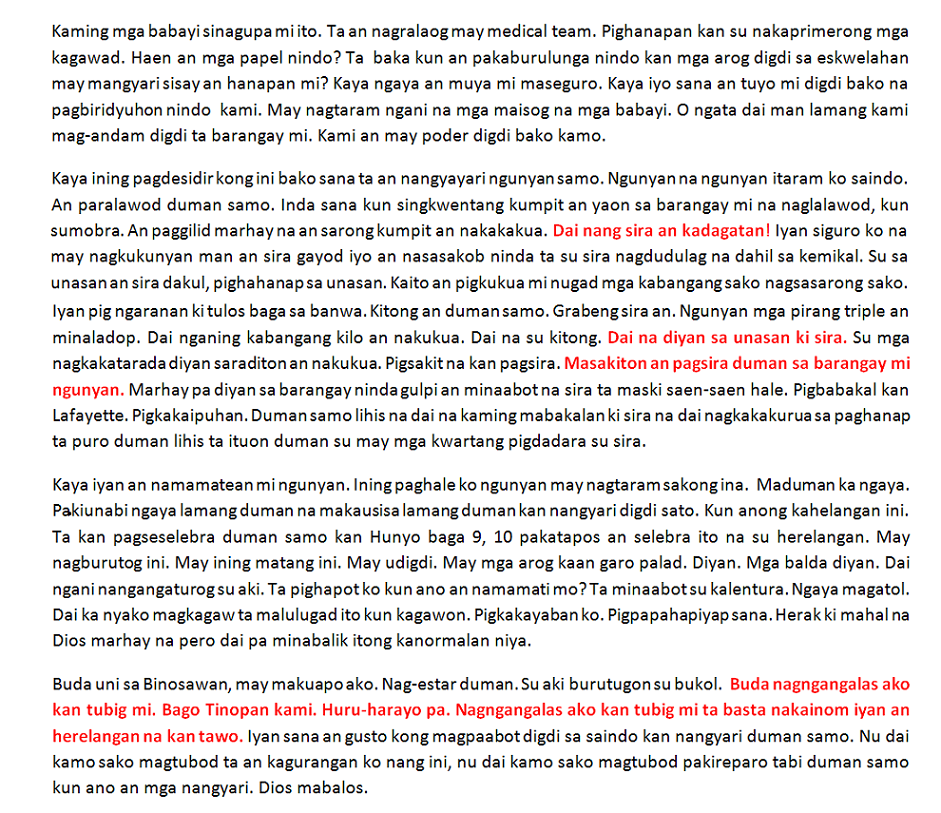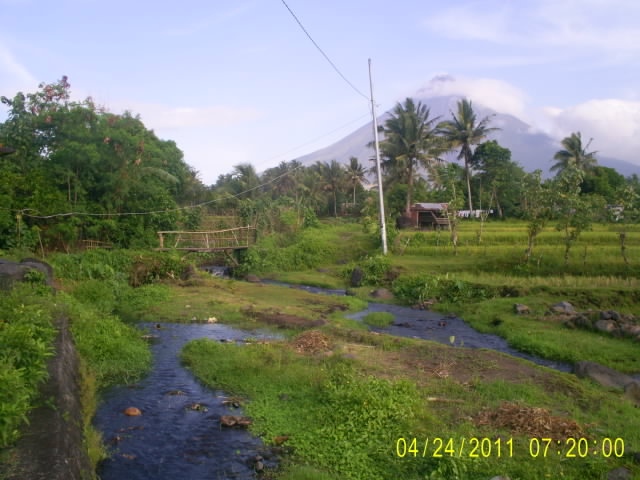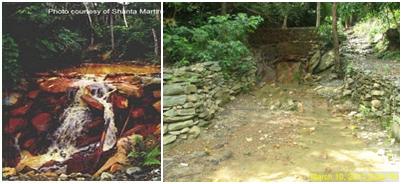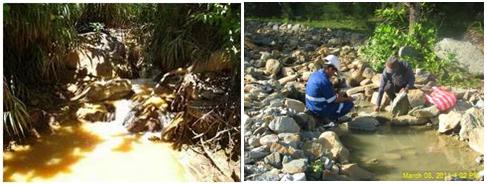http://mensab.blogspot.com/
After the Brundtland Report of 1987 and the Earth Summit of 1992, the rhetoric of development planning and intervention has been sustainable development. Its basic principle is meeting the needs of the present generation without compromising those of the future generation, and in the process improving the quality of life.
In the Philippines, this premise was articulated in the Philippines Agenda 21 (PA 21) which “envisions a better quality of life for all Filipinos through the development of a just, moral, creative, spiritual, economically vibrant, caring, diverse yet cohesive society characterized by appropriate productivity, participatory and democratic processes, and living in harmony and within the limits of the carrying capacity of nature and the integrity of creation.” PA 21 had extensive influence and tenor on the policymaking and policy direction initiatives which deal toward the quest for sustainable development.
Rapu-Rapu Case
In July 2001, the Department of Environment and Natural Resources (DENR) granted an Environmental Compliance Certificate (ECC) with 29 conditionalities to Lafayette Philippines, Inc. (LPI), an Australian mining company, on its Rapu-Rapu Polymetallic Project. Lauded as the first mining project to undergo the rigorous process of acquiring the necessary requirements set by RA 7942 leading to the issuance of ECC, LPI intended to mine gold, silver, copper, and zinc in Rapu-Rapu Island , Albay , Philippines for six years. In granting the ECC to Lafayette , the DENR was convinced that the project was able to muster necessary and sufficient support from and was socially acceptable to the locals. This view was disputed by Sagip-Isla Sagip- Kapwa, Inc. (SSI), a people’s organization established through the initiative of the Rapu-Rapu parish to campaign against mining the island. SSI was supported by various religious congregations headed by Bishop Jose Sorra of the Diocese of Legazpi, cause-oriented groups, and the three major universities in Bicol, namely, Ateneo de Naga University, Bicol University , and Aquinas University . Despite the support of these institutions and groups for the anti-mining campaign, the DENR saw that majority of the locals were in favor of the conduct of the mining project in their island.
Lessons from Rapu-Rapu
Several lessons could be learned from the advocacy campaigns launched by both pro-mining and anti-mining groups as they tried to influence the decision of the locals whether to resist or accept the Rapu-Rapu mining project.
First, advocacy campaigns must be grounded on, sensitive and responsive to the realities of the locals. The pro-mining advocacy campaign was able to highlight the locals' basic need – a regular source of income. Many locals were not earning sufficiently from fishing and farming. They were looking for alternative source of income which the mining project could provide them. Aside from that, another factor that could have tipped the scale in favour of the mining project was the timing of the project. In October 1998, super typhoon Loleng raged the province of Albay which brought devastating damage to properties especially houses of the locals. Understandably, the decreasing fish catch and unreliable crop production in the area did not help much in providing cash income for the repair and construction of the houses. Many locals who wanted to have access to cash saw the mining project as an opportunity to have their houses repaired and rebuilt and to gain a regular source of cash income.
Second, leadership is key to a successful campaign. The pro-mining group found influential and effective leaders in the politicians and public officials in Rapu-Rapu, while the anti-mining group was unable to find leaders in important areas such as the direct impact barangays of Malobago and Pagcolbon. In barangay Binosawan however, the anti-mining group found good leaders that's why Binosawan remains a stronghold of the anti-mining group in Rapu-Rapu.
Third, the organizational structure of a group and its capacity to strategize the advocacy campaign are effective when they involve the local leaders and capitalize on the present needs and vulnerabilities of the locals. The pro-mining campaign was backed by a clear-cut organization (LPI) with substantial funding and full-time staff focused on convincing the locals of the benefits and advantages of the mining project unto their lives, while the anti-mining group was driven by a loose organization composed of volunteers. Although these volunteers who were mostly teachers, students, professionals, fishers, and farmers seemed passionate of the cause, they still needed to attend to their primary jobs outside of struggle against mining. Also, the structure of SSI was concentrated and attached to the parish structure that when the priest transferred to another assignment, the whole campaign got affected and took a backseat.
Fourth, strategies that encourage and entail local participation in campaign activities create a sense of belongingness and ownership of the struggle. The wider the reach or contact of the activities among the locals, the greater the chance the locals will participate. Advocacy campaigns should have a constituency. It should be clear who the target constituents of the campaign are. The pro-mining group was bent to get the approval of the public officials first, then it worked from there going to the level of the locals with the local leaders’ blessing and sometimes with the local leaders’ presence in the campaign. As in other rural area, the patron-client relations still dominate the political, economic and social landscape of Rapu-Rapu.
Fifth, simplicity and clarity of the message and content of advocacy campaigns generate understanding, response and ultimately acceptance. Clearly, the message of pro-mining group was employment and various development projects, such as electrification, school building, livelihood projects, among others, while SSI conveyed the goal of avoiding the impending destruction of the island’s ecosystem once mining operations commence. Unfortunately, this was not quite intelligible to the locals, especially if expressed through figurative and metaphoric forms in the homilies or sermons of a priest.
Sixth, the role of media cannot be undermined in advocacy campaigns. Both pro-mining and anti-mining groups had relative successes in disseminating and raising their points and counter points for and against mining through the use of media. The anti-mining group was able to call the attention of the Senate through its Committee on Environment to conduct an inquiry in aid of legislation regarding the mining issues in Rapu-Rapu. The pro-mining group, on the other hand, took a time slot in a local radio station in Legazpi City , Albay exhorting the public of the benefits of the mining project.
These lessons challenge the way the locals are treated in advocacy campaigns. In various contexts, the locals are situated in a particular environment. To influence their decision, these contexts that enfold their behaviours must be taken into account in the formulation of advocacy agenda. The complexities of the situation on its context present the realities of the locals where an advocacy campaign may start.
































































































































No comments:
Post a Comment